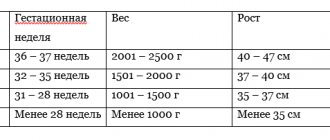28.06.2017
Diseases of the genitourinary system | Kidneys
The name of this disease, formed by a combination of Greek and Latin terms, contains:
- its character is inflammation (Latin “it”);
- target organ - kidney (Greek "nephros");
- intraorgan localization of primary damage is the glomerulus (Latin “glomus”).
The renal glomerulus is a component of the working unit of the kidney - the nephron (there are about a million of them in each kidney). Here the first stage of blood purification is carried out and the so-called. primary urine. For further “inspection” and return of useful components to the body, it is sent to the nephron canalicular apparatus and gradually turns into something that the body is ready to part with - the so-called. secondary urine.
Acute glomerulonephritis
Inflammatory damage to the renal glomeruli (and subsequently to other components of the organ) is of an immune nature. Immune mechanisms play a special role at the onset of the disease (later, non-immune factors are also involved in its development). Compounds formed in response to the introduction of a “foreigner” (especially repeated) with the aim of neutralizing it (so-called immune complexes) settle in the kidneys, triggering a cascade of inflammatory reactions. Their result is a morphological and functional change in the nephrons, their gradual depletion and death. As a result, the kidneys cease to adequately cope with the role assigned to them. And the body, on the one hand, loses what it needs (for example, proteins and blood cells), and is forced to coexist with what it wants and should get rid of (toxic metabolic products).
Acute inflammation of the glomerular apparatus, as a rule, is characterized by an acute onset with pronounced symptoms (see below). There is also the so-called latent type with subtle signs, mainly detected through laboratory tests.
The acute nature of the disease is more characteristic of young people (children and adolescents) and has a favorable prognosis. In 20% of patients the disease becomes chronic.
Chronic glomerulonephritis
The scenario for the development of pathological changes in renal tissue is similar to the acute type (a combination of immune and non-immune factors). The course is long. Exacerbations are possible. The prognosis is determined by the stage of the process at the time of detection (compensated, decompensated, terminal - severe renal failure), the clinical form of the pathology (nephrotic, hypertensive, hematuric, latent, mixed). Most often we are talking about improving the quality of life and delaying the onset of renal failure. Sometimes complete remission occurs.
Membranous glomerulonephritis
Morphological type (identified by analysis of biopsy material) of acute and chronic damage to the glomerular apparatus of the kidneys.
Glomerulonephritis in children
It accounts for about half of the indications for the use of hemodialysis and subsequent kidney transplantation. The symptoms and mechanism of development of the disease are similar to the “adult” version.
Causes of glomerulonephritis
- The leading positions are occupied by bacterial (sepsis, endocarditis, tonsillitis, periodontitis, caries, diphtheria, meningitis, typhoid fever, pneumonia, etc.) and viral (mumps, hepatitis, measles, rubella, herpes simplex, etc.) infections. Next come:
- Parasitic diseases (trichinosis, schistosomiasis, toxoplasmosis, malaria).
- Systemic pathologies with an autoimmune mechanism (systemic lupus erythematosus, systemic vasculitis, etc.).
- Use of vaccines and serums; blood transfusion (blood transfusion).
- Poisoning with substances (ethanol, lead, mercury, cadmium, organic solvents, etc.).
- Irradiation.
- Toxic effect of drugs (for example, penicillamine).
Hypothermia is a significant trigger factor.
Causes of glomerulonephritis in children
All of the above is also true for children. To this it is worth adding dysfunction of the immune system of a hereditary nature.
In the first place (in the case of an acute form of the disease) is a previous streptococcal infection (acute tonsillitis, scarlet fever, pneumonia, etc.).
The underlying causes of the chronic form often remain unknown. Various allergic and autoimmune diseases play a major role in the development of both forms of damage to the glomerular apparatus.
Acute post-streptococcal glomerulonephritis
TONSILLITIS (STRESS) AND WHAT IS IT DANGEROUS FOR THE KIDNEYS?!
Acute tonsillitis (in everyday life, tonsillitis) is an infectious disease with local manifestations in the form of acute inflammation of the palatine tonsils, most often caused by streptococci or staphylococci, less often by other microorganisms. Sore throat is also called an exacerbation of chronic tonsillitis.
WHAT IS STREPTOCOCCUS?
Beta-hemolytic streptococcus from group A (lat. Streptococcus pyogenes) is a very common microbe (bacterium) that can be detected in the body of many healthy people, but under unfavorable conditions it can provoke sore throat, sore throat (acute tonsillitis), scarlet fever, skin infections, abscess formation, blood poisoning and complications in the form of acute rheumatism and ACUTE GLOMERULONEPHRITIS.
HOW DOES STREPTOCOCCI INFECTION OCCUR?
Epidemiological studies have found that beta-hemolytic streptococcus infects up to 20% of healthy children who are carriers of this microbe.
Most often, beta-hemolytic streptococcus is transmitted through particles of mucus that are released from the throat and nose of a sick person (or carrier) during coughing or sneezing.
STREPTOCOCCUS CAUSES MANY DISEASES:
Nowadays, streptococci are of interest mainly because of the rare cases of rapidly progressing disease, as well as the risk of serious complications from untreated infections.
Acute streptococcal infection may manifest as pharyngitis (strep throat), scarlet fever (rash), impetigo (infection of the superficial layers of the skin), or cellulitis (infection of the deeper layers of the skin). Aggressive, toxigenic infection can lead to necrotizing fasciitis, myositis, and streptococcal toxin shock syndrome. Patients following an acute streptococcal infection may also develop immune-mediated post-streptococcal complications such as acute rheumatism and acute glomerulonephritis.
LATE COMPLICATIONS OF STREPTOCOCOCCAL INFECTION (IMMUNE-RELATED)
Specifically, in nearly 1% of children ages 3 to 15 who are recently infected with beta-hemolytic streptococcus, the immune system begins to produce antibodies (defense immune cells) that attack not only the infection itself, but also normal body tissue, including joint tissue , KIDNEY and heart. Because some proteins of streptococcus are very similar in structure to the proteins of the cells of the heart, kidneys and joints, i.e. The immune system cannot recognize a foreign protein from its own and thus the body begins to attack itself. For this reason, 1-2 weeks after the onset of sore throat (or scarlet fever) caused by beta-hemolytic streptococcus, such children may develop the so-called “acute rheumatic fever”, in which inflammation of the joints and heart occurs and/or “ACUTE POST-STREPTOCOCCAL GLOMERULONEPHRITIS”.
LET'S CONSIDER HOW YOU CAN SUSPECT ACUTE GLOMERULONEPHRITIS:
If you notice that a few weeks after suffering from a sore throat (scarlet fever, pharyngitis), he has the following symptoms:
- Swelling of the face, pastiness in the eyelids or in another area of the body has appeared, or the child rarely urinates.
- The urine has acquired a dark red (burgundy) color (the color of meat slop urine)
Other symptoms may include fever, weakness, chills, and severe headache.
IF YOU NOTICE THESE SYMPTOMS, CONSULT A DOCTOR IMMEDIATELY!
In any case, all children and adults who have a sore throat, pharyngitis or scarlet fever in whom tests have revealed beta-hemolytic streptococcus from group A should be treated with antibiotics.
Treatment should be started as soon as possible (this is necessary to prevent the formation of abscesses in the throat or the spread of infection to neighboring organs), as well as the development of late complications in the heart, kidneys and joints.
If you have any questions about this topic, we will try to answer them.
Damage to the palatine tonsils in acute tonsillitis (hypertrophy (increase in size) of the palatine tonsils, plaque)
Beta-hemolytic streptococcus from group A (lat. Streptococcus pyogenes) is a very common microbe (bacterium) that can be detected in the body of many healthy people
Scarlet fever is an acute infectious disease characterized by fever, intoxication, sore throat and profuse pinpoint rash. Children aged 2-10 years are most often affected. The causative agent of scarlet fever is group A streptococcus.
Macrohematuria (hematuria visible to the eye, urine in the form of “meat slop”)
Symptoms of glomerulonephritis
The onset of an acute type of illness (with a classical course) is difficult to miss:
- Blood in urine.
- A sharp decrease in the amount of urine (up to almost complete cessation).
- Severe swelling (face pale, puffy).
- Dyspnea.
- Increased pressure (mainly diastolic).
- Characteristic changes in laboratory parameters (the presence of white and red blood cells, and protein in the urine; decreased protein in the blood, anemia, increased markers of acute inflammation, etc.).
Possible warning signs of an acute condition:
- temperature increase;
- pain in the lumbar region;
- weakness.
The latent form is characterized by vague signs: a slight increase in pressure, a slight admixture of blood in the urine, and lower back pain.
Manifestations of the chronic form of the disease are determined by its variant, duration of course (and degree of decompensation), presence and stage of renal failure. For example, the hypertensive form is characterized by: heart pain and headaches, flickering of flies in the field of vision, small amounts of blood and protein in the urine, and a persistent increase in pressure. As the disease progresses, it becomes increasingly difficult to reduce blood pressure with appropriate medications.
The nephrotic type is characterized by significant edema, severe disturbances in protein and fat metabolism, and a tendency to form blood clots.
The mixed type is the most aggressive. They manifest themselves as rapidly increasing symptoms of renal failure - the inability of the kidneys to cope with their work, leading to failures in all life support systems of the body. It is characterized by (the degree of severity is determined by the stage):
- small amount of urine discharge;
- persistent increase in blood pressure;
- significant swelling;
- dyspnea;
- cardiac dysfunction;
- skin itching;
- symptoms of severe intoxication - headache, weakness, nausea, vomiting.
Symptoms of slomerulonephritis in children
Similar to the adult version with some features:
- More often there are cases of practically asymptomatic course.
- Less often, blood pressure rises sharply.
- More often there are pronounced abdominal pains (so-called abdominal syndrome).
- More often combined with pyelonephritis (inflammatory damage to the renal tubular apparatus).
Glomerulonephritis in children
Glomerulonephritis in children is an acute or chronic inflammation of the renal glomeruli of an infectious-allergic nature. Acute glomerulonephritis in children is characterized by a triad of syndromes: urinary (oliguria, anuria, hematuria, proteinuria), edematous and hypertensive; in chronic forms, one of them or a latent course predominates. The diagnosis of glomerulonephritis in children is based on medical history, characteristic clinical picture, laboratory parameters, ultrasound and puncture biopsy of the kidneys. In the acute period of glomerulonephritis in children, bed rest, diet, antibiotic therapy, corticosteroids, anticoagulants, diuretics, hypotensive and immunosuppressive drugs are prescribed. The pathogenesis of inflammation is based on the immune response to exposure to infectious pathogens or allergens. As a result of the reaction between the antigens circulating in the blood when the disease occurs and the antibodies produced to neutralize them, large protein formations are formed. These immune complexes settle on the walls of the renal capillaries, disrupting the filtering ability of the glomeruli.
Acute glomerulonephritis in children often begins against the background of a recent infection (sore throat, pneumonia, scarlet fever and others) and after vaccination.
There are a number of factors that can provoke kidney damage due to an inadequate response of the body to foreign antigens:
- bacteria (mainly streptococci, but also staphylococci, enterococci, pneumococci, etc.);
- viruses (influenza, chickenpox, rubella, measles, hepatitis);
- parasites (toxoplasmosis, malaria);
- allergens (pollen, household and food allergies, vaccinations, insect bites);
- toxins (poisoning, taking nephrotoxic drugs).
Symptoms of glomerulonephritis in children
Acute glomerulonephritis
The disease can begin either acutely, in the case of nephritic syndrome. The gradual onset of the disease is prognostically less favorable.
Nephritic syndrome. This form of the disease usually affects children 5-10 years old. Usually the disease develops 1-3 weeks after suffering from tonsillitis, scarlet fever, ARVI and other infections. The onset of the disease is acute. Characteristic:
- Edema. They are located mainly on the face. These are dense, difficult-to-pass swellings that, with adequate treatment, last up to 5-14 days.
- Increased blood pressure, accompanied by headache, vomiting, dizziness. With proper treatment, it is possible to reduce blood pressure in 1-2 weeks.
- Changes in urine: decreased amount of urine; the appearance of protein in the urine in moderate quantities; red blood cells in urine. The number of red blood cells in the urine is different for all patients: from a slight increase to a significant one. Sometimes there are so many red blood cells that the urine turns red (urine is the color of meat slop); an increase in the number of leukocytes in the urine.
Changes in urine persist for a very long time, several months. The prognosis for this form of acute glomerulonephritis is favorable: recovery occurs in 95% of patients within 2-4 months.
Acute glomerulonephritis in children usually develops 2-3 weeks after an infection, most often of streptococcal origin. In the typical version, glomerulonephritis in children is cyclical in nature, characterized by a rapid onset and severe manifestations: fever, chills, poor health, headache, nausea, vomiting, and lower back pain.
In the first days, the volume of urine excreted noticeably decreases, significant proteinuria, micro- and macrohematuria develop. Urine takes on a rusty color (the color of 'meat slop'). Swelling is characteristic, especially noticeable on the face and eyelids. Due to edema, the child’s weight may be several kilograms higher than normal. There is an increase in blood pressure to 140-160 mm Hg. st, in severe cases becoming long-lasting. With adequate treatment of acute glomerulonephritis in children, kidney function is quickly restored; full recovery occurs after 4-6 weeks (on average after 2-3 months). Rarely (in 1-2% of cases) glomerulonephritis in children becomes chronic, which has a very diverse clinical picture.
Hematuric chronic glomerulonephritis is the most common in childhood. Has a recurrent or persistent course with slow progression; characterized by moderate hematuria, with exacerbations - gross hematuria. Hypertension is not observed, edema is absent or mild.
Children often show a tendency to a latent course of glomerulonephritis with scanty urinary symptoms, without arterial hypertension and edema; in this case, the disease can only be detected through a thorough examination of the child.
Nephrotic glomerulonephritis in children typically has an undulating, constantly relapsing course. Urinary symptoms predominate: oliguria, significant edema, ascites, hydrothorax. Blood pressure is normal or slightly elevated. Massive proteinuria and slight erythrocyturia are observed. Hyperazotemia and decreased glomerular filtration appear with the development of chronic renal failure or exacerbation of the disease.
Hypertensive chronic glomerulonephritis is rare in children. The child is worried about weakness, headache, dizziness. Characterized by persistent, progressive hypertension; urinary syndrome is mild, swelling is insignificant or absent.
Treatment of glomerulonephritis in children
For severe manifestations of glomerulonephritis in children (gross hematuria, proteinuria, swelling, arterial hypertension), inpatient treatment with bed rest and a special diet (limited salt and protein), etiotropic, symptomatic and pathogenetic therapy is indicated. A strict salt-free diet is necessary until the swelling disappears, and a strict protein-free diet is necessary until the normal volume of excreted fluid is restored.
In the acute period of glomerulonephritis in children, antibiotic therapy (penicillin, ampiox, erythromycin) is prescribed. Correction of edematous syndrome is carried out using furosemide and veroshpiron. Among the antihypertensive drugs used in children are long-acting ACE inhibitors (enalapril), slow calcium channel blockers (nifedipine), and in adolescence - angiotensin II receptor blockers (Cozaar, Diovan). Glucocorticosteroids (prednisolone) are used, and in severe forms of chronic glomerulonephritis - immunosuppressive drugs (chlorbutin, cyclophosphamide, levamisole). To prevent thrombosis in severe nephrotic syndrome, anticoagulants (heparin) and antiplatelet agents are prescribed. With a significant increase in the levels of uric acid, urea and creatinine in the blood, accompanied by severe itching and icterus of the skin, hemodialysis can be used.
After discharge from the hospital, children should be monitored by a pediatrician and pediatric nephrologist for 5 years, and in case of relapses of glomerulonephritis - for life. Spa treatment is recommended; preventive vaccination is contraindicated.
Treatment of glomerulonephritis
Treatment of acute glomerulonephritis
As a rule, it is carried out in a hospital. A huge non-drug support for the body is:
- physical peace;
- strict diet (little salt and animal protein, up to the complete exclusion of the latter);
- individual drinking regime.
Drug treatment is aimed at eliminating the causative factor and leading syndromes (edematous, hypertensive, dysmetabolic): antimicrobial, diuretic, hypotensive, detoxifying, anti-inflammatory, immunomodulating agents. The latter include, among other things, potent drugs with multiple side effects - cytostatics and glucocorticoids.
Treatment of chronic glomerulonephritis
During the period of exacerbation, the basic principles are the same. During the period of remission, complete rest is transformed into a gentle regime of avoiding hypothermia and overload (both physical and mental). Careful elimination of infectious foci is recommended (regular visits to an ENT doctor and dentist). Diet becomes an integral part of life. Some foods (for example, alcohol, carbonated drinks, fatty meats, etc.) are completely excluded. Sometimes additional medications containing essential amino acids are required. In the absence of severe complications, periodic stay in areas with a dry and hot climate gives very good results. Some patients, remaining in these places for permanent residence, were completely cured.
Dry and hot conditions allow the kidneys to “rest”, since the skin is actively involved in the process of releasing toxins (through sweat).
Treatment of glomerulonephritis in children
Similar to the above option.
RISK FACTORS FOR THE DEVELOPMENT OF COMPLICATIONS OF ACUTE POST-INFECTIOUS GLOMERULONEPHRITIS ON DEBUT IN CHILDREN
Published in 2021, Issue No. 01(103) January 2021, MEDICAL SCIENCES | No comments yet
RISK FACTORS FOR THE DEVELOPMENT OF COMPLICATIONS OF ACUTE POST-INFECTIOUS GLOMERULONEPHRITIS ON DEBUT IN CHILDREN
Research Article
Imaeva L.R.1, *, Akhmetshin R.Z.2, Shiryaeva G.P.3, Shagarova S.V.4, Khazieva N.E.5
1 ORCID: 0000-0002-6735-4896;
1, 2, 3, 4 Bashkir State Medical University of the Ministry of Health of Russia, Ufa, Russia;
5 Republican Children's Clinical Hospital, Ufa, Russia
* Corresponding author (liliyaraz[at]mail.ru)
annotation
In 100 children with acute postinfectious glomerulonephritis (APIGN), the role of various factors in the manifestation of the disease was assessed. The article describes the features of the clinical picture of the initial period of acute glomerulonephritis, depending on the degree of activity of the renal process, the development of complications of the disease, provides anamnestic data, the results of a comprehensive examination of patients, and highlights perinatal and postnatal, as well as social risk factors. The purpose of this study was to establish the significance of combined risk factors influencing the degree of activity of clinical manifestations at the onset of acute post-infectious glomerulonephritis in children and the development of complications of the disease.
Key words: acute glomerulonephritis, complications, children.
RISK FACTORS FOR THE DEVELOPMENT OF COMPLICATIONS IN THE ONSET OF ACUTE POSTINFECTIOUS GLOMERULONEPHRITIS IN CHILDREN
Research article
Imaeva LR1, *, Akhmetshin RZ2, Shiryaeva GP3, Shagarova SV4, Khazieva NE5
1 ORCID: 0000-0002-6735-4896;
1, 2, 3, 4 Bashkir State Medical University of the Ministry of Health of the Russian Federation, Ufa, Russia;
5 National Children's Clinical Hospital, Ufa, Russia
* Corresponding author (liliyaraz[at]mail.ru)
Abstract
The current study assesses the role of various factors in the manifestation of acute post-infectious glomerulonephritis in 100 children. The article describes the clinical features of the initial period of the disease based on the degree of activity of the renal process and the development of complications as well as provides anamnestic data and the results of a complex examination of patients. The authors also highlight perinatal, postnatal and social risk factors. The aim of this study is to establish the significance of combined risk factors affecting the degree of activity of clinical manifestations in the onset of acute post-infectious glomerulonephritis in children and the development of complications of the disease.
Keywords : acute glomerulonephritis, complications, children.
Introduction
Acute glomerulonephritis (AGN), despite the well-known clarity of clinical manifestations and the apparent rarity of chronicity of the disease, remains a problem, many aspects of which are far from being resolved [7]. Acute post-infectious glomerulonephritis is much more common in children than in adults [5]. Severe acute glomerulonephritis can lead to the development of life-threatening complications.
Materials and research methods
This work is based on the results of a comprehensive examination of 100 children with acute post-infectious glomerulonephritis with nephritic syndrome aged 2–17 years, of which 56 girls (37.3%), 94 boys (62.7%). Acute nephritic syndrome was manifested by a classic triad of symptoms: edema, arterial hypertension, hematuria. The comparison group consisted of 30 healthy children and adolescents aged 3–17 years who did not have kidney or heart diseases.
Research methods included a survey of parents, urine tests, clinical and biochemical blood tests, a study of the functional state of the kidneys, hemostasiogram, immunogram (immunoglobulins of three classes, circulating immune complexes - CEC, complement), titer of antistreptolysin O (ASLO), throat and skin smears (for streptoderma), instrumental methods: ultrasound examination of the abdominal organs and kidneys, ECG, according to indications: echocardiography (ECHOCG), electroencephalography (EEG), Doppler ultrasound of cerebral vessels. To survey children and their parents, a specially designed questionnaire was used, which contained 37 questions and reflected perinatal and postnatal risk factors and social factors. All additional research, questionnaires, and inclusion of research results in this work were carried out with the consent of parents and children.
The study results were processed using standard packages of the STATISTICA version 6.0 program (USA). The main probability indicators were determined: standard deviation, confidence interval according to Student's test, correlation coefficients between the main parameters, as well as multiple correlation coefficients.
Main results
To assess the nature of the clinical manifestations of acute glomerulonephritis at the onset, children were divided into 3 groups: with minimal (21%), moderate (39%) and high (40%) degrees of activity of the renal process. The criteria for assessing the severity were the severity, duration of persistence of edematous syndrome, arterial hypertension, urinary syndrome (macrohematuria, proteinuria) and the presence of complications (acute kidney injury, acute heart failure, angiospastic encephalopathy).
The main clinical manifestations in patients with minimal activity of AGN are slight swelling (facial pastiness for 2-5 days) in 95.2% of cases; periodic pain in the abdomen and lumbar region (within 2-3 days) in 57.1% of cases; 4 (19%) patients experienced a slight increase in blood pressure within 2-3 days. A distinctive feature of this group was the short duration of manifestations of nephritic syndrome.
Patients with moderate activity of AGN occupied an intermediate place in severity between children with minimal and high disease activity. AGN in children of this group (n=39) occurred with severe nephritic syndrome: edema was observed in 100% of cases, in 6 patients (15.4%) ultrasound revealed a small amount of free fluid in the abdominal cavity. Arterial hypertension in children with moderate AGN activity was detected statistically significantly more often than with minimal AGN activity and less frequently than with high AGN activity. The increase in blood pressure in 43.6% of cases, in contrast to the high degree of activity, was moderate (130/85 – 145/90 mm Hg), and in 28.2% of cases it reached 150/110 mm Hg. Art. and lasted for 7-10 days. Gross hematuria in this group was observed in 35 (89.7%) children and persisted for 2-5 days, of which in 9 (23%) macrohematuria lasted more than one week. Acute renal failure was observed in 10 (25.6%) children, manifested by an increase in urea levels in 20.5% of cases, an increase in creatinine levels in 25.6% and a decrease in daily diuresis.
The next group (n=40) consisted of children with high AGN activity. The onset of the disease in these patients was characterized by edema and gross hematuria in 100% of cases, widespread edema (on the face, trunk, limbs) was also observed in 100% of cases, and ultrasound revealed a moderate amount of free fluid in the abdominal cavity. Gross hematuria was longer than in children with minimal and moderate activity of AGN and amounted to (10.5±1.5 days), and in 4 (19.6%) it lasted for 16-23 days. The average systolic blood pressure was 160±20 mm Hg. Art., diastolic – 95.5±10 mm Hg. Art. In some patients, blood pressure rises up to 190/120 mm Hg were observed. Long-term persistence of arterial hypertension was 10-15 days. A significant proportion of children (95%) had complaints of headaches, a decrease in the amount of urine excreted; periodic pain in the abdomen and lumbar region was noted in 100% of cases. An increase in urea levels was observed in 25 (62.5%) patients, an increase in creatinine levels – in 21 (52.5%). In 8 (20%) patients, an increase in alanine transferase (ALT) was detected. In children with a high degree of activity against the background of pronounced manifestations of nephritic syndrome, the course of the disease was characterized by the development of renal and extrarenal complications.
The average level of urea and creatinine in the blood serum was statistically significantly higher than their indicators in children of both the control group and in patients with minimal and moderate activity of AGN (Table 1). The average level of total protein, cholesterol, total bilirubin, and ALT in the blood serum in patients with AHF did not differ from those in the control group.
Table 1 - Average indicators (M±m) of biochemical blood tests in patients with AGN of varying degrees of activity at the onset of the disease
| Indicators | OGN minimal activity, n=21 | AGN of moderate activity, n= 39 | OGN maximum activity, n=40 | Control n=30 |
| Total protein, g/l | 72,29±0,84 | 68,96±0,87 | 63,47±1,02 | 73,39±1,18 |
| Urea, mmol/l | 5,46±0,21* | 6,01±0,34* | 11,37±0,61 | 3,95±0,20* |
| Creatinine, µmol/l | 70,98±1,75* | 76,03±2,85* | 102,79±3,07 | 65,84±2,86* |
| Cholesterol, mmol/l | 4,34±0,83 | 4,06±1,18 | 4,06±1,3 | 4,27±0,16 |
| Total bilirubin, µmol/l | 9,08±3,13 | 9,02±2,78 | 8,68±5,47 | 10,48±0,86 |
| ALT, U/l | 13,01±0,65 | 16,46±0,9 | 23,64±2,09 | 12,47±1,19 |
Note: * p<0.001 compared with indicators at maximum OGN activity.
A decrease in glomerular filtration was detected in 32 (32%) of 100 patients with acute respiratory syndrome. Decreased renal concentration function in 43 (43%). At the onset, in children with high activity of AGN, a decrease in the filtration and concentration functions of the kidneys was observed significantly more often than with moderate and minimal activity of the disease (Fig. 1).
Rice. 1 – Impairments in the functional state of the kidneys in children with AGN of varying degrees of activity at the onset of the disease
In case of AGN with nephritic syndrome of varying degrees of activity, compared with the control group, ENT pathology, multiple caries, skin diseases, and iron deficiency anemia were observed significantly more often. Hydrothorax (6%), hydropericardium (4%) were detected at the onset of AGN in children with a high degree of disease activity against the background of widespread edema and decreased diuresis.
A frequent complication of AGN at the onset was acute kidney injury, which was observed in 31% of cases: in 6 children with a moderate and in 21 with a high degree of activity and in no case with minimal activity of the renal process. Acute kidney injury among children with high activity of AGN was significantly more common than with moderate and minimal activity of the disease and with higher levels of urea and creatinine. In 1 (2.5%) of 40 children with a high degree of activity, the course of AGN was complicated by the development of multiple organ failure (acute heart failure, acute liver failure, cerebral edema, stage II-III coma).
Acute heart failure developed in 6% of cases in children with acute hypertension at the height of edema syndrome, arterial hypertension and decreased diuresis. All 6 children had the maximum degree of activity of the renal process. In 2 out of 6 children, heart failure was manifested by acute left ventricular failure (shortness of breath, foam at the mouth, crepitating fine bubble moist rales throughout all fields of the lungs, tachycardia). In 4 children, right ventricular failure was observed (liver enlargement by 5-6 cm from under the edge of the costal arch, cyanosis, edema, cardiac arrhythmia, increased heart size). Ultrasound in children with heart failure revealed a hydropericardium, and an echocardiogram showed a decrease in the contractility of the heart muscle.
Angiospastic encephalopathy was observed in 2 (2%) children with AGN, manifested by severe headaches, nausea, vomiting, loss of consciousness, tonic and clonic convulsions, and bradycardia. In 8 (8%) children with AHF, there was a violation of the functional state of the liver with an increase in ALT levels (150±10.5 IU).
The development of AGN of varying degrees of activity was most often preceded by acute respiratory infection (ARI) - 43 (43%) cases, somewhat less frequently by streptoderma and tonsillitis, acute lymphadenitis and the cause remained unclear (Fig. 2). In 34 (79.1%) children who suffered ARI, an increase in ASLO titer was found, which is consistent with the data of M. Ilyas et al. [9, P. 1101]: 84%. In 37% of cases, the streptococcal etiology of the disease was confirmed by culture of hemolytic streptococcus from the mucous membrane of the pharynx or from the skin.
Rice. 2 – Diseases that preceded the development of AGN
To determine sensitization to streptococcus, the ASLO titer in the blood was examined. In all groups of children with varying degrees of AGN activity, increased ASLO values were detected, but the highest level of ASLO was detected with a high degree of glomerulonephritis activity, compared with minimal and moderate disease activity; these differences are statistically significant (Table 2).
Table 2 – ASLO level (M±m) in children with AGN at the onset of the disease
| Indicators | OGN | Control, n=30 | ||
| minimal activity, n=21 | moderate activity, n= 39 | high activity, n=40 | ||
| ASLO titer | 294,51±25,67 | 596,51±30,33 | 872,53±42,82* | 125,7±30,55 |
Note: * p<0.005 in comparison with indicators with minimal, moderate AGN activity and indicators in the control group.
There was a positive significant correlation between the degree of activity of acute glomerulonephritis (minimal, moderate, high activity) and the ASLO titer at the onset of the disease (Spearman correlation coefficient=0.515; P<0.001). There was a positive significant correlation between the presence of complications at the onset of acute glomerulonephritis and the ASLO titer at the onset of the disease (Spearman correlation coefficient=0.25; P=0.013). A positive significant correlation was established between the level of blood pressure at the onset of AGN and the ASLO titer in the first days of the disease and the ASLO titer 1 month after the onset of the disease (Spearman correlation coefficient = -0.34, P = 0.0005 and Spearman correlation coefficient =-0.40; P=0.034, respectively). A positive significant correlation was found between the severity of edematous syndrome at the onset of acute glomerulonephritis and the ASLO titer at the onset of the disease (Spearman correlation coefficient = 0.39; P = 0.0055). There was a positive significant correlation between the level of urea and creatinine at the onset of the disease and the ASLO titer at the onset of AHF (Spearman correlation coefficient = 0.25, P = 0.012 and Spearman correlation coefficient = 0.23, P = 0.019; respectively).
When examining 20 children with AGN at the onset of the disease for cytomegalovirus infection (CMVI), Epstein-Barr virus (EBV), chlamydia, active chlamydial infection was found in 4 (4%) children, active EBV in 2 (2%) children (1%) – active CMV infection. Chlamydial infection was present in 2 patients with high activity of AGN and in 2 with minimal disease activity; EBV in both cases was detected with high activity of AGN; CMV infection – with minimal disease activity.
Most often, AGN began at the age of 7-11 years (44%) of all 100 patients, which coincides with the data of other authors [1], [2], [4]. But there is another opinion [8] that the peak incidence of acute glomerulonephritis in childhood occurs between the ages of 2 and 6 years. In this case, OPIGN of moderate or high activity most often developed (38.6% and 43.2% of cases out of 44). There are no indications in the literature about the risk of developing AGN of varying degrees of activity depending on age in children.
Among patients with AGN with nephritic syndrome, boys are 1.8 times more common than girls, which coincides with studies by various authors [4], [10]. The predominance of boys among patients with acute respiratory syndrome can be explained by the fact that boys are more often exposed to hypothermia (which contributes to the development of sore throat and acute respiratory infections) and receive microtraumas of the skin (which is a necessary condition for the development of pyoderma).
The majority of children with AGN lived in rural areas. There were no significant differences in the development of AGN of varying degrees of activity in children living in urban and rural areas. This may be due to the increase in the socio-economic level of the country and the urbanization of the countryside.
The majority of children with AGN had unfavorable social factors: smoking of one of the parents in 51% of cases, unsatisfactory living conditions and low level of education of parents in 34%, professional hazards of parents in 25%, alcohol abuse in 9% of cases. With high activity of AGN in children, unsatisfactory living conditions and a low level of education of parents were significantly more common than with moderate and minimal activity of the disease.
The debut of OGN, regardless of the degree of activity of the process, significantly more often (51% of cases) occurred in the autumn period compared to other seasons of the year. In the summer, a rare incidence was observed in children with high and moderate activity of AGN, and there was not a single case of the disease with minimal activity. A slight increase in the incidence rate was noted in August and a sharp increase in the frequency in September, which is apparently associated with a change in weather and climatic conditions. A number of authors also point out the important role of weather and climatic stress in the occurrence of AGN in children [3], [6].
The incidence of frequently ill children among patients with AGN was significantly higher compared to the control group. Among patients with high GN activity, frequently ill children were significantly more common compared to the group of children with minimal GN activity.
60 (60%) children with AGN had a history of pathological conditions at birth: early rupture of amniotic fluid in 21% of cases, entanglement of the fetus with the umbilical cord and asphyxia of the newborn in 22% of cases. 18% of children were born by caesarean section. These data indicate possible renal hypoxia during childbirth, which is consistent with studies by other authors [4]. Children with a high degree of AGN were significantly more likely than children with minimal AGN activity to be born by cesarean section. In mothers of children with high AGN activity, threats of miscarriage in the second half of pregnancy, preeclampsia and nephropathy in pregnancy were observed significantly more often compared to mothers of patients with minimal and moderate AGN activity. Children with high AGN activity were born prematurely significantly more often than patients from groups with moderate and minimal disease activity. The risk of developing intrauterine infection and intrauterine growth retardation were also observed significantly more often in children with a high degree of AGN activity.
Conclusion
As a result of our correlation analysis, it was established that in the development of AGN, a combination of 5-6 risk factors was more often identified (frequent intercurrent diseases in the history, chronic foci of infection, streptoderma, family history of pathology of the gastrointestinal tract and urinary system organs, history of encephalopathy ). The combination of 5-6 risk factors was in a significantly positive correlation with the levels of urea, creatinine and daily diuresis at the onset of AGN with nephritic syndrome (Spearman correlation coefficient = 0.25; P = 0.013).
conclusions
- Risk factors for the development of acute glomerulonephritis are ante- and perinatal factors, heredity burdened with renal pathology, frequent intercurrent diseases, chronic foci of infection, and socially disadvantaged factors in the family. The combination of risk factors determines the degree of activity of the renal process at the onset of the disease.
- The development of complications (acute kidney injury, acute heart failure and angiospastic encephalopathy) in acute glomerulonephritis is facilitated by a combination of a number of risk factors (a history of frequent intercurrent diseases, chronic foci of infection, streptoderma, a history of encephalopathy, the severity of edema syndrome, arterial hypertension, gross hematuria at the onset illnesses).
- Children with combined risk factors should be included in the risk group for the development of acute glomerulonephritis and preventive measures should be taken.
| Conflict of interest Not specified. | Conflict of Interest None declared. |
List of literature / References
- Gorchakova L.N. Malinovskaya. Herpes virus infection in children with acute glomerulonephritis / L.N. Gorchakova, V.V. Dlin, N.V. Shabalina, V.V. // Pediatrics. 2000 No. 1. pp. 14-16.
- Pediatric nephrology: A practical guide / ed. E. Leumann, A.N. Tsygina, A.A. Sargsyan. – M.: Litterra, 2010.- 400 p. – pp. 98-105.
- Kovalchuk V.K. Population-based study of risk factors for the occurrence of glomerulonephritis in children in industrial centers of the Primorsky Territory / V.K. Kovalchuk, A.N. Ni, V.M. Koldaev et al. // Population health and habitat. 2007. No. 12. P. 20-23.
- Loskutova S.A. Incidence and clinical characteristics of AGN in children in the Novosibirsk region / S.A. Loskutova, A.V. Chuprova, E.A.Movchan, O.V. Dunicheva // Nephrology and dialysis, vol. 5, 2003, no. 1. P.152-156.
- Malkoch A.V. Acute post-streptococcal (post-infectious) glomerulonephritis. / A.V. Malkoch, A.Yu. Nikolaev, N.N. Filatova. // Attending doctor. 2021 No. 1.
- Ni A. The role of seasonal factors in the development of diseases of the urinary system in children / A. Ni, V.N. Luchaninova. // Russian Bulletin of Perinatology and Pediatrics. 2011. No. 1. P. 41-46.
- Acute glomerulonephritis – are all the issues resolved? From the editor. Clinical nephrology. No. 2 – 2009. – 80 p., pp. 4-8.
- Shilov E.M. Nephrology / E.M. Shilov.. 2007. – 688 p., p. 204-206.
- Ilyas M. Changing epidemiology of acute post-streptococcal glomerulonephritis in Northeast Florida: a comparative study / M. Ilyas, A. Tolayamat. //Pediatr. Nephrol. (2008) 23: 1101–1106.
- Rodrigues-Itube B. Pathogenesis of poststreptococcal glomerulonephritis a century after Clemens von Pirquet / B. Rodrigues-Itube, S. Batsford. // Kidney Int. – 2007. – Vol.71. – P.1094-1104.
List of literature in English / References in English
- Gorchakova LN Gerpesvirusnaja infekcija u detejj s ostroprotekajushhim glomerulonefritom / LN Gorchakova, VV Dlin, NV Shabalina et al. // Pediatrija [Pediatrics]. 2000. No. 1. pp. 14-16.
- Children's nephrology: Prakticheskoe rukovodstvo [Children's Nephrology: A Practical Guide] / Edited by Eh. Lojjmanna, AN Cygina, AA Sarkisjana. – M.: Litterra, – 400 p. – pp. 98-105. [in English]
- Koval'chuk VK Populjacionnoe issledovanie faktorov riska vozniknovenija glomerulonefrita u detejj v promyshlennykh centrakh Primorskogo kraja [Population-Based Study of Risk Factors for Glomerulonephritis in Children in Industrial Centers of Primorsky Krai] / VK Koval'chuk, AN Ni, VM Koldaev et al. // Zdorov'e naselenija i sreda obitanija. 2007. No. 12. pp. 20-23.
- Loskutova SA Zabolevaemost' i klinicheskaja kharakteristika OGN u detejj v Novosibirskojj oblasti . / SA Loskutova, AV Chuprova, EAMovchan et al. //zh. Nephrologija i dializ, Vol. 5, 2003, No. 1. pp. 152-156.
- Malkoch AV Ostryjj poststreptokokkovyjj (postinfekcionnyjj) glomerulonefrit. / A.V. Malkoch, A.Ju. Nikolaev, N.N. Filatova // Lechashhijj vrach. 2021. No. 1. [in English]
- Ni A. Rol' sezonnykh faktorov v razvitii boleznejj mochevojj sistemy u detejj / A. Ni, VN Luchaninova // Rossijjskijj Vestnik perinatologii i pediatrii . 2011. No. 1. pp. 41-46.
- Ostryjj glomerulonefrit – vse li voprosy resheny? From redakcii. Klinicheskaja nephrologija. No. 2 – 2009. – 80 p., pp. 4-8.
- Shilov EM Nephrology [Nephrology] / EM Shilov. 2007. – 688p., pp. 204-206.
- Ilyas M. Changing epidemiology of acute post-streptococcal glomerulonephritis in Northeast Florida: a comparative study / M. Ilyas, A. Tolayamat // Pediatr. Nephrol. (2008) 23: 1101–1106.
- Rodrigues-Itube B. Pathogenesis of poststreptococcal glomerulonephritis a century after Clemens von Pirquet. / B. Rodrigues-Itube, S. Batsford // Kidney Int. – 2007. – Vol.71. – pp. 1094-1104.
Herbs for glomerulonephritis
Herbs are powerful medicines. In an individually selected combination, herbal infusions can provide a full range of “services” necessary in the treatment of glomerulonephritis: reduce blood pressure, eliminate swelling and inflammation, restore tissue, harmonize metabolism, remove toxins and reduce their formation, etc. Can herbal infusion completely replace drug therapy? The answer to this question is very individual. In any case, only a herbalist can select it after examining the patient and familiarizing himself with the results of laboratory and instrumental studies. A herbalist can carry out his own diagnostics, for example, using the method of determining the state of various body systems using the iris of the eye (iridology).
In the treatment of patients suffering from glomerulonephritis, other holistic methods of traditional medicine can be used - classical and resonant homeopathy, osteopathy, acupuncture, qigong therapy. An individually selected diet and exercise regimen play a big role.
Are the methods of classical medicine combined with traditional ones? Yes. The “proportion” is determined by the duration and severity of the disease, the individual characteristics of the body and the course of the disease, and the choice of the person himself.
Make an appointment











